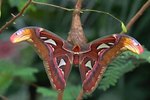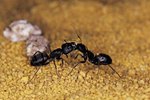
For every person on Earth, an estimated 1.5 billion insects exist. That’s a lot of bugs. Africa is home to a wide variety. Most African bugs are harmless, but the continent is home to a handful of hazardous bugs that visitors should keenly avoid. Other African bugs simply can’t be avoided, so it’s imperative to take preemptive steps to avoid getting sick from a bite.
Vectors of Disease
The mosquito is indirectly the deadliest creature on the planet. Every 30 minutes, one child under 5 years old dies from Malaria, which is transmitted by the mosquito’s bite. Some estimates have pin the deaths of almost half of the people that have ever lived on the mosquito, such is its capability for spreading disease. It’s not the only African bug to do so either; the tsetse fly is a vector for sleeping sickness, which is fatal if untreated. Fortunately, vaccines are available for both diseases.
Devastating Swarms
Locust swarms, while not directly hazardous to humans, devastate crops and contribute to famine in Africa, causing much suffering and morbidity. Yellow jackets, a species of wasp, are known for swarming behavior, too. These stinging insects aren’t an immediate threat to life on their own, but a swarm is capable of delivering sufficient stings to cause a painful death to any human victim.
Untouchable Beetles
Blister beetles aren’t particularly aggressive, and that’s for good reason; they don’t need to be. Simply handling one of these bugs is enough to create a hazard. These dazzlingly colorful beetles secrete a chemical called cansarathin when alarmed. This substance can cause painful blistering on your skin.
No Ordinary Bee
The Africanized bee, also known as the “killer bee,” is no more venomous that the average honey bee. It is the sheer aggression combined with swarm behavior that makes these genetically engineered bugs such a hazard. Killer bees work as teams. If the hive is threatened, they’ll attack en masse, stinging their target hundreds, if not thousands, of times and chasing them for almost a mile.
Eight-Legged Terrors
The button spider, the violin spider and the six-eyed sand spider are Africa’s three most hazardous spiders. All three have the potential to deliver deadly bites. The six-eyed sand spider, although not as potent as the button spider or violin spider, is potentially the most dangerous, as no antivenin exists for the creature's bite.
Just Plain Gross
Congo floor maggots, the larvae of the blow fly, can infest a human host but don't spread disease. Most Africans avoid these creepy larvae by sleeping on beds, as they infest only those who sleep on the floor.
References
- Environmental Graffiti: Five Deadliest Insets on Earth
- Environmental Graffiti: 10 Most Diabolical Insects on Earth
- World Health Organization: Human African Trypanosomiasis
- Environmental Graffiti: The Five Most Dangerous Insect Swarms
- The Safari Guide: Insects and Arachnids
- Health 24: Button Spider
- Stanford University: Introduction to Myiasis
Photo Credits
-
Jupiterimages/Photos.com/Getty Images
Writer Bio
Simon Foden has been a freelance writer and editor since 1999. He began his writing career after graduating with a Bachelors of Arts degree in music from Salford University. He has contributed to and written for various magazines including "K9 Magazine" and "Pet Friendly Magazine." He has also written for Dogmagazine.net.




